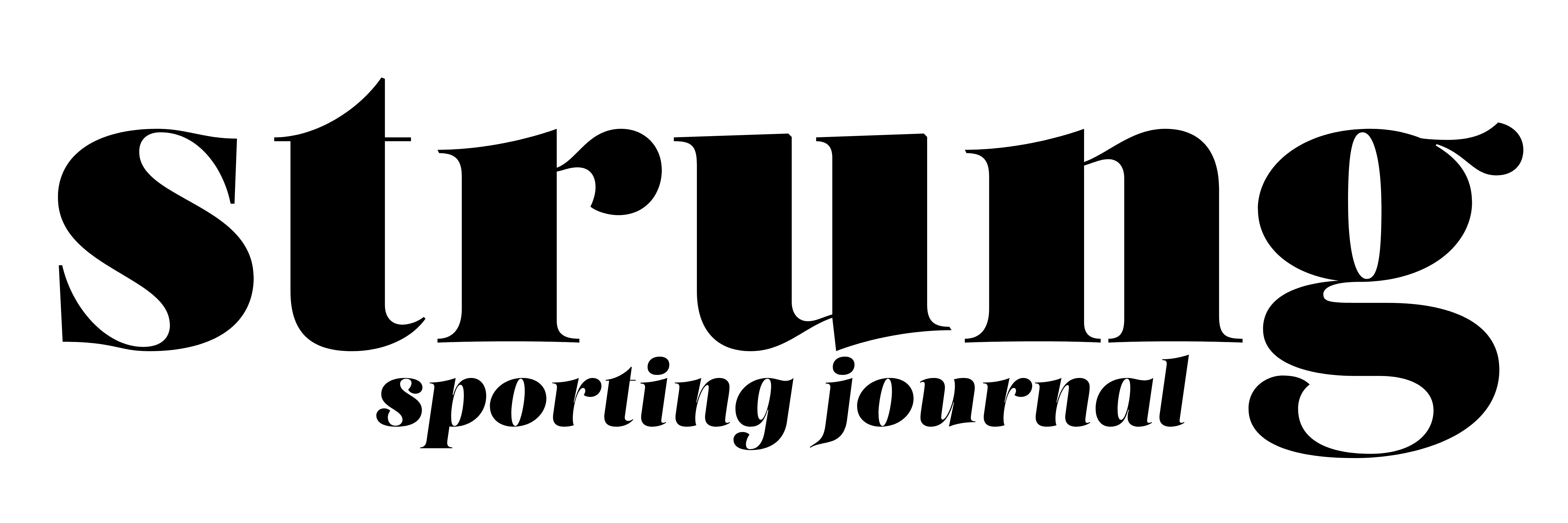by Michael L. Neiduski
My breath wasn’t slowing down any time soon. Not after the 230-yard fast-walk/slow-run I’d just woven around the pecan trees that bordered the field edge, and certainly not with ears and eyes and antlers staring back at me as I steadied myself and my rifle against the hard bark of the tree. But I knew my sequence, I knew the rifle, and I knew that the .260 round would hit where I held the crosshairs. The Remington Model 7 that sat tucked into the crook of my shoulder and welded to my cheek that morning came a long way to be on that Texas pecan farm; considering I hated that rifle for a very long time, I can tell you that I came a long way, too. Time, experience, and contentment can do that for both things and people.
I’ve sat in deer stands for as far back as I can remember, since the age of five or maybe six years old, in wooden platform stands made by the hands of my father and his father together, even the one on Reynolds’ land with a long walkway that had its own railing along a rotund oak limb. I tagged along with a BB gun and battery-heated socks with hopes of staying warm long enough not to interrupt my dad’s sit. It rarely worked; more often than not, I sat with my feet in his coat for warmth to round out our time in the woods. But I was there with them, my idols, and I didn’t want to be anywhere else.
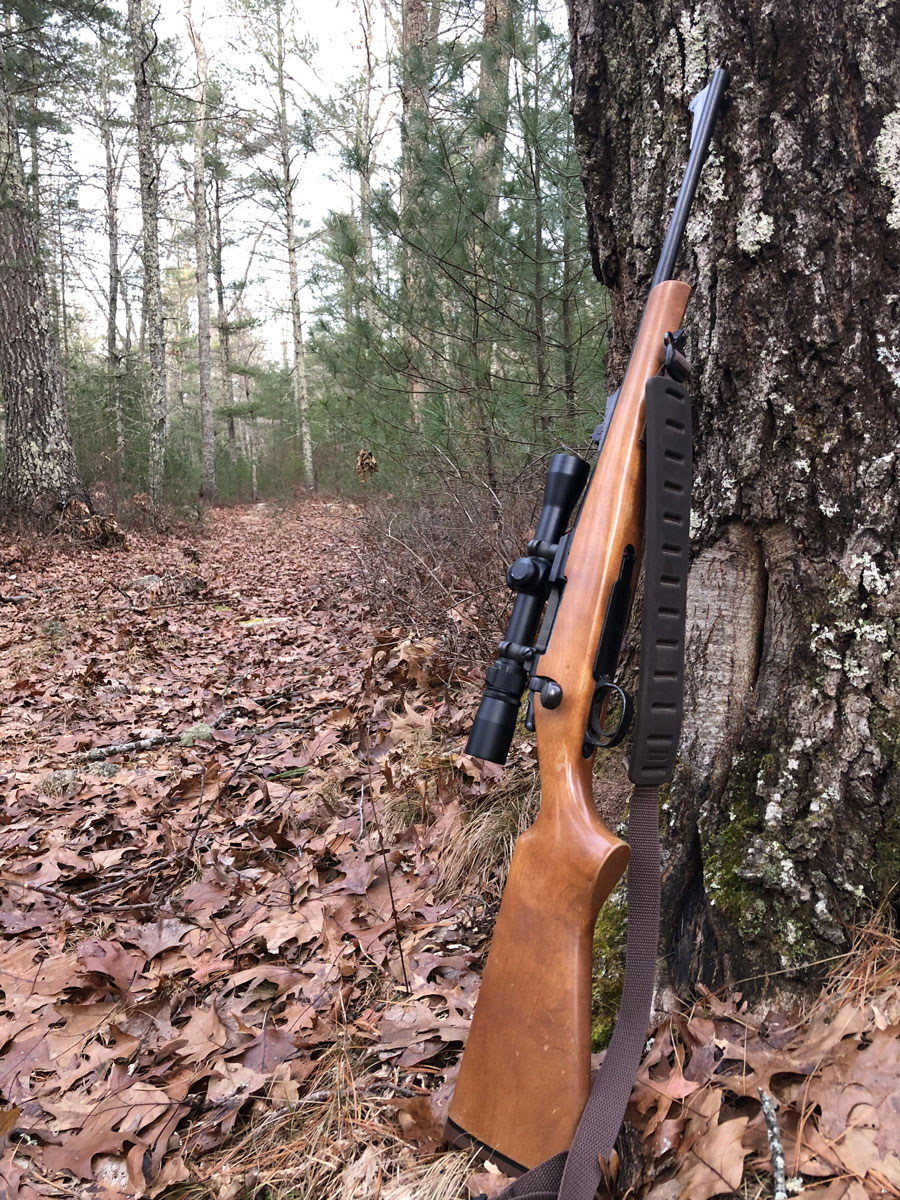 Frank, my grandfather, ran a World War II-era .30-06 semi-automatic, a 13-pound behemoth that he wielded with the same precision that a surgeon affords a scalpel. I could barely shoulder it at the time. The tool of choice for my dad, a carpenter by trade and ever practical, was a Marlin 30-30 lever action that used the same maneuver to chamber a round and cock the hammer as what pumped up the BB gun I carried. Mine was simply carried in homage to the real thing that he carried in his massive palms whenever on stand. Their guns were no different from any of their other tools, handled with the same fluidity with which they swung framing hammers and penciled lines with a carpenter’s square.
Frank, my grandfather, ran a World War II-era .30-06 semi-automatic, a 13-pound behemoth that he wielded with the same precision that a surgeon affords a scalpel. I could barely shoulder it at the time. The tool of choice for my dad, a carpenter by trade and ever practical, was a Marlin 30-30 lever action that used the same maneuver to chamber a round and cock the hammer as what pumped up the BB gun I carried. Mine was simply carried in homage to the real thing that he carried in his massive palms whenever on stand. Their guns were no different from any of their other tools, handled with the same fluidity with which they swung framing hammers and penciled lines with a carpenter’s square.
I idolized them, and their tools of the trade, too. I wanted my own gun to be an extension of me, just as theirs were to them. I wanted their stories and their red-and-black-checked Woolrich and their L.L. Bean boots. I wanted to be one of them, and as it is with youth, I wanted it now.
Instead, on my 12th birthday I opened a box containing something completely off my young radar, something not even in consideration for a New England kid’s first deer rifle: the Model 7 chambered in .260. Through the wrapping paper and under the box top there lay a short-barreled, short action, bolt rifle with an orange-yellow wood stock and orange rubber butt pad. I’m sure I had that face at the time—you know the one—where you’re trying to convey appreciation and also figure out what in tarnation is in your lap. I know I had it because Frank launched into an explanation of how this round is great for young kids and shoots super flat for very long shots and could be restocked when I got older to fit me as I grew. I smiled, but I wasn’t buying it.
Dad zeroed it in and I shot it a few times before the next season opener. I was proficient enough, hitting the paper plate that we nailed to a tree across the farm pond and thus passing the test to take the rifle into the woods for the upcoming opener. It seems ridiculous now, the paper-plate test, but those were the times and they were my idols. I wasn’t exactly clamoring to practice shooting it more, nor did I know that I should. The paper-plate test left me nowhere near proficient, not even close.
Not only that, but the bolt gave me fits every time I racked it. The action had a tendency of getting stuck open as I fiddled to get the bolt moving forward and locked. I had a terrible time getting the eye relief right on the scope, too; I was constantly moving it forward and backwards to find the right sight picture. And the kick! I grew up around beef cattle and would have rather our herd bull walloped me in the chest than shoot more rounds at paper plates through that gun. But the gun was mine and I was going hunting and hunters persevered, at least according to all the stories I heard. And so I did.
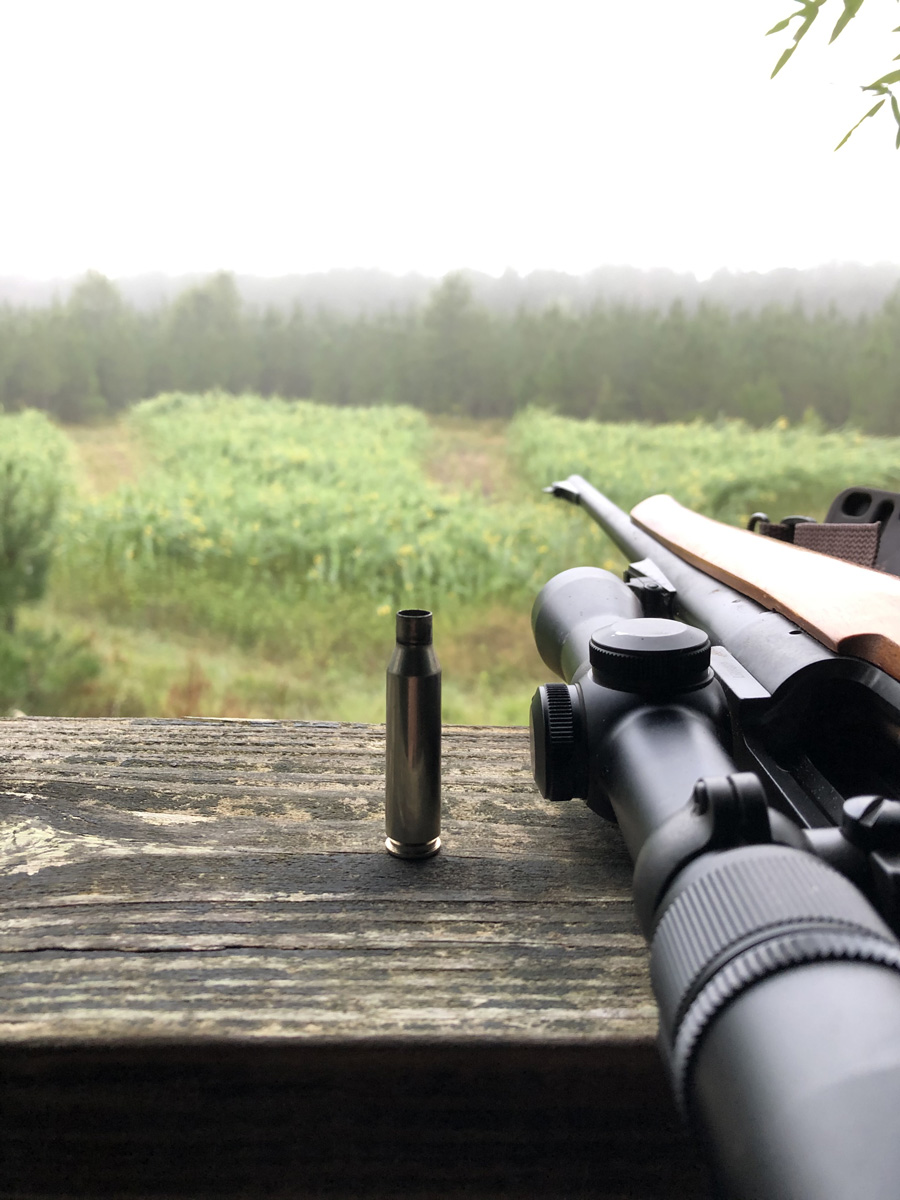 The first deer that I shot with it survived the encounter. It was my first opening day and I sat nestled up against the base of one of the three big white pines at the lower end of what would become known as “Mike’s field” on our new family farm. Like clockwork, two does came from the opening of the back field into the hardwoods. They were alarmed and moving, but not running. They were feeling the pressure from Frank’s post-morning sit/saunter along the steep rock face that marked the southern boundary of the farm, where he hoped to do as he just did: bump a couple of deer my way.
The first deer that I shot with it survived the encounter. It was my first opening day and I sat nestled up against the base of one of the three big white pines at the lower end of what would become known as “Mike’s field” on our new family farm. Like clockwork, two does came from the opening of the back field into the hardwoods. They were alarmed and moving, but not running. They were feeling the pressure from Frank’s post-morning sit/saunter along the steep rock face that marked the southern boundary of the farm, where he hoped to do as he just did: bump a couple of deer my way.
I’ll spare you the details, but the short of it is that a 12 year old, nerves, deer, and opening day don’t mix well. The bullet skimmed hair, skin, and a bit of fat off the stomach, and she ran with a scar thereafter, showing up on the trail camera that my dad bought off eBay later that season.
I killed a deer—a nice one, too—with that rifle two weeks later, but the die was already cast. The rifle wasn’t what they carried and I never gave it a fair shake. The Model 7 seemed clunky, new, and out of place in the quaint, sleepy hollow-esque New England woods that surrounded deer season—a piece of modernity amidst an antiquated backdrop. I carried it for a few more seasons, pulled the trigger a few more times, but nothing to show for it. I was convinced that it was the rifle, being too young and cocksure to know the rifle had nothing to do with it.
Frank died when I was 16 and Dad stopped hunting for a long while after that. I couldn’t touch Frank’s rifle, a physical and mental weight I’ve yet to carry to this day, but Dad’s rifle became fair game. He may have taken a break from the woods, but his gun never did. For almost 15 years it was the one I took to the woods, morning and afternoon, season in and season out; the Model 7 sat in the corner of my bedroom, just to the side of my dresser with its bolt slid open and collecting dust.
Time went on. I settled elsewhere, and traveling home to hunt the farm happened less and less until it happened not at all. I chased deer on other farms in other states with others’ guns. Eventually one Christmas, I asked for a hard case to take a rifle with me.
Maybe it was the guilt of not coming home for deer season, or moving half a country away and only seeing Dad a few days a year, but I left his .30-30 where it stood in the basement safe and packed up the Model 7 for new horizons.
It was different now, no longer new and shiny; the stock was a bit dull and the finish wearing in a few spots from neglect. Age tints perspective like the polarization on a pair of sunglasses—it’s impossible to notice the added layer, but the view is unmistakably different when the years are added on. In the years after Frank’s passing, I clung to anything with a tie to him. No longer the kid in oversized camo, I wore dark green wool pants and his buffalo plaid shirt into the woods with the necessary orange vest over the top. I wore his neck gaiter and lined deerskin gloves and even drove his pickup.
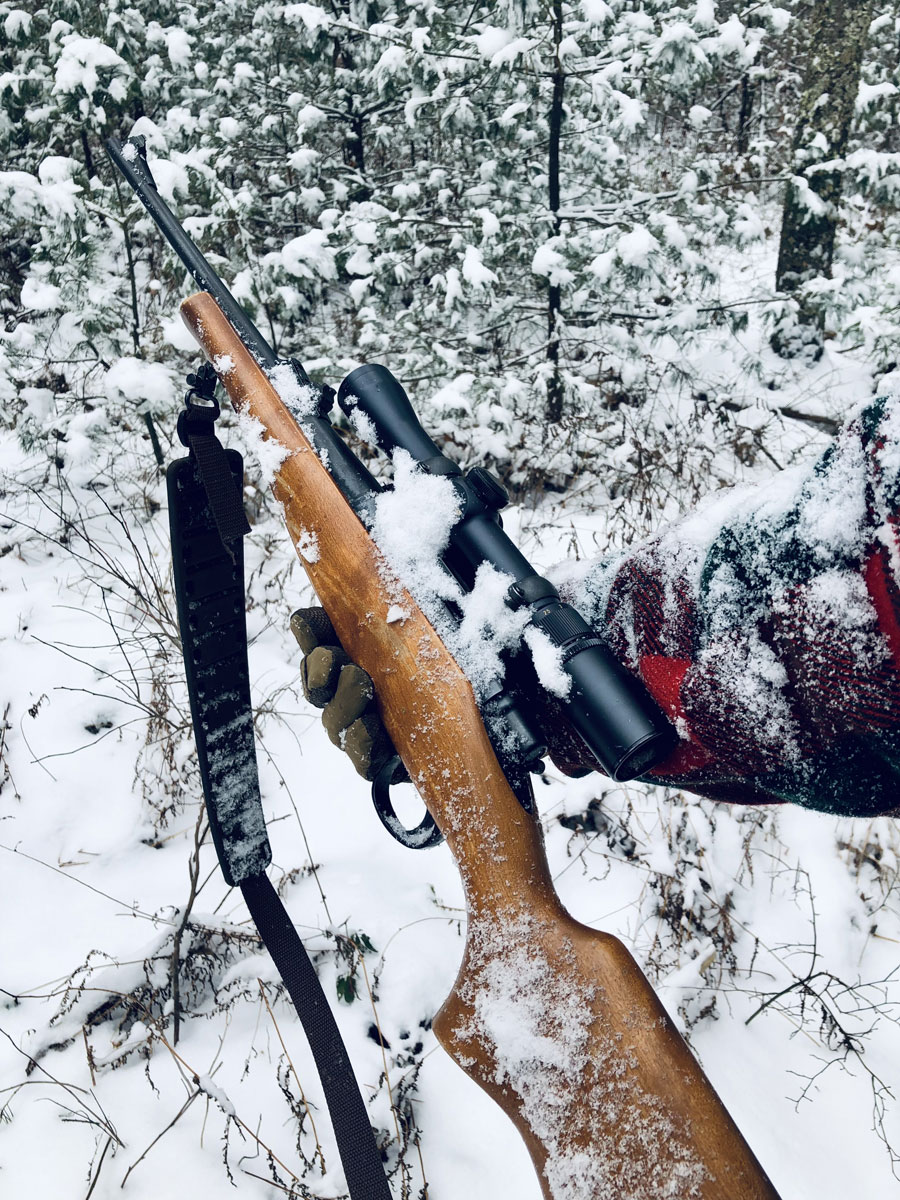 He didn’t give me much when he was around—most of the gifts from him were tokens chosen by my mother with his name written on the tag, but he gave me that rifle and it seemed a shame to let it sit in that corner any longer.
He didn’t give me much when he was around—most of the gifts from him were tokens chosen by my mother with his name written on the tag, but he gave me that rifle and it seemed a shame to let it sit in that corner any longer.
But I still didn’t trust it. Old feelings are hard to extract, like cockleburs and burdocks and stick-tights enmeshed in wool; it takes time, patience, and experience. A helping hand doesn’t hurt, either.
I hunted with other rifles in the years since I brought the Model 7 west with me to Wisconsin. I shot it at the occasional target, and like I was 12 again, I generally hit what I aimed at, even closer to the bullseye and grouped tighter, too. But still, every time I slid its slender frame out of the case, I gave it the once over and wondered: Are you going to let me down again this time?
I often thought about modifications during those first few years back together. A new scope, a new stock, a new trigger maybe—I still focused on the rifle and all the ways that I believed it slighted me.
My first hunt of 2020 came in September as a mentor for the first Hunt to Eat Camp, an immersive hunting experience for new hunters to expand their level of comfort in all aspects of hunting. I’ve always had an eye for sentiment, so if I were to hunt alongside an up-and-coming hunter, the Model 7 would be there with me.
Part of the camp curriculum includes range time with detailed instruction, something any hunter would do well to embrace. After the students all took their turns, some of the mentors took the opportunity to check their zeros after travel. I did, too. I settled the rifle into the rest, removing all influence but the pad of my finger on the cold metal of the trigger. My nerves ran rampant like never before in 30 years of firearms use. How could I be a mentor and be this nervous to shoot this rifle?
But no one was paying attention to what I was doing. They were all engrossed in conversation about the afternoon hunt and the endless what-ifs that come with new experience. No one cared about me or the gun or the target downrange. The pressure wasn’t there anymore, so the only thing left was to align the crosshairs on the target and squeeze the trigger. Two shots, two matching holes just outside of the bullseye. Unbeknownst to the crowd, relief crashed through me like a wave as I looked through my binoculars at the target. There was nothing wrong with the rifle, the scope, or the trigger. The “something off” was me.
The next morning, I watched the sun come up over a field of sunhemp nestled amongst young plantation pines, a perfect food source tucked in a host of cozy bedding options. My mentee had taken a mature doe the night before and was sleeping off the high. I sat in the box blind alone, eyes cruising the field edges while the world woke up. The interruption came after the shots of other hunters and the group text lit up. Congratulations sent, I felt something ahead of me and my eyes snapped to the path in the middle of the field: deer. A doe—fair game, as that’s what the landowner wanted us to take.
The crosshairs came to rest on the interior edge of her shoulder as my elbow steadied on the blind’s window ledge. Inhale. Start to exhale. Squeeze on the trigger, know your shot before you take it, Mike. Recoil punched into my shoulder as she lurched from the impact right on target. I slid the empty cartridge out of the chamber and thumbed it in my hand. I keep empty shells from important moments as talismans of lessons learned, and this one would join them as a memento of self-doubt exorcised.
I wasn’t ready for that gun as a kid. I wasn’t ready for the weight of expectation that came with the litany of hunters before me in my family—to be clear, expectations that came from nowhere and no one but myself. I could blame Dad or Frank for my failure, for not teaching me the right way or taking enough time with me, but that wouldn’t be fair to them. They never asked me to want to be like them. They just wanted another hunting buddy, another person in the truck to laugh at jokes and ask questions and hear their stories. They wanted someone to help drag after things came together and someone to share their solemnity in the rare times they fell apart.
It’s tough to have patience, to let the skill and comfort grow over time through perseverance and education. It’s harder when the expectation weighs heavy on the outset, as though the outcome should come now instead of in due time. Some things require seasoning, hunters and deer rifles included.
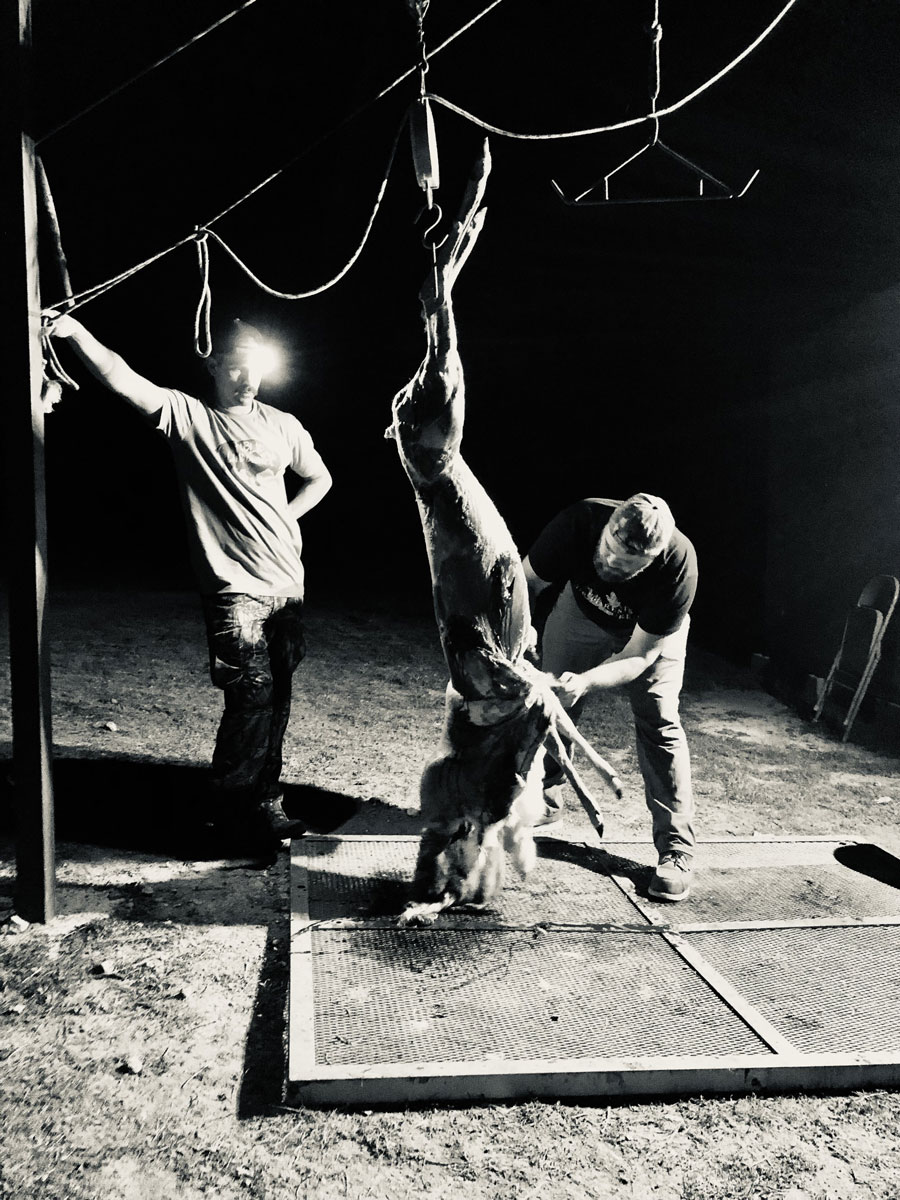 Twenty years later, I have nothing to prove in the deer stand, not to me, to Frank or Dad, or to my hunting partners. This is a perspective that only time and patience could give me. Persistence. Showing up and doing the work and leaning in when it’s hard. All I wanted as that little kid was to be good enough to be on par with the legends that my dad and Frank shared while I sat in the backseat of the pickup on post-hunt drives. I wanted to skip the hard parts; I wanted to skip the learning and the growing and get right to it. There’s something to be said for letting things marinate, for letting them develop and grow and blossom organically. Trying to run at the speed of a rifle round isn’t going to cut it, for things are missed along the way.
Twenty years later, I have nothing to prove in the deer stand, not to me, to Frank or Dad, or to my hunting partners. This is a perspective that only time and patience could give me. Persistence. Showing up and doing the work and leaning in when it’s hard. All I wanted as that little kid was to be good enough to be on par with the legends that my dad and Frank shared while I sat in the backseat of the pickup on post-hunt drives. I wanted to skip the hard parts; I wanted to skip the learning and the growing and get right to it. There’s something to be said for letting things marinate, for letting them develop and grow and blossom organically. Trying to run at the speed of a rifle round isn’t going to cut it, for things are missed along the way.
Hunting is hard enough. The pressure mounts the moment you leave the parking spot and begin the story of the day, a story that crescendos when the exclamation point of a rifle shot is slammed on the page. It’s a steep ramp; Frank knew that, and my Model 7 was his attempt at lowering the slope, but I was too proud to let him help.
I killed that buck in Texas without one shred of doubt in my mind while my buddy Willie looked over my shoulder. We shared a blind and stories and memories for two days before the moment arrived to go after the wide 8-point in the wheat field below us. The night before, we sat surrounded by deer and watched the sun set until it was so dark that we couldn’t see each other. In pitch black, I told him it had been 18 years since Frank passed and 22 since I killed that first deer with the Model 7 leaning in the corner.
It’s no longer shiny, new, and out of place. I no longer doubt the rifle, just like I no longer doubt myself. I grew up listening to the stories of legends, stories I never thought I could tell on my own.
But here I sit, staring at the calendar as another deer season looms, cleaning a rifle I never wanted, a rifle I didn’t know I needed. And now, it’s the only story I want to tell.
More features
